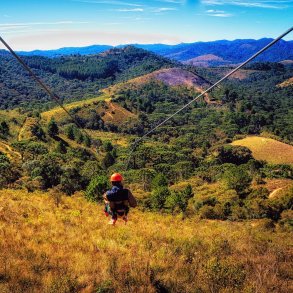By Michael Stern for Enlivening Edge Magazine
This post is the first in a series exploring the similarities, differences, and potential synergies between the work of Frederic Laloux, Otto Scharmer, and Thomas Hübl. Part One will focus on Laloux and Scharmer.
“The pain we feel is the pain of something old that is dying…while something new is waiting to be born. We happen to be in one of these transition periods where the old is starting to break down but the new hasn’t taken shape yet.” – Frederic Laloux, Reinventing Organizations: An Illustrated Invitation to Join the Conversation on Next-Stage Organizations (pp. 16-18)
“At the beginning of the twenty-first century, probably for the first time in human history, the living presence of the abyss —that is, that simultaneous existence of one world that is dying and another one that is being born—is a widely shared experience for millions of people across cultures, sectors, and generations.” – Otto Scharmer, Leading From the Emerging Future: From Ego-System to Eco-System Economies (p. 153)
Many Maps, One Journey – One Map, Many Journeys
The basic point of intersection between Frederic Laloux’s Reinventing Organizations and Otto Scharmer’s Leading From the Emerging Future is a map of developmental stages, which outlines the progression of human evolution over the last several centuries. With each new stage of consciousness comes radically new ways of creating social structures and systems.
While Scharmer and Laloux use different language to label the stages, it is clear they are essentially describing the same phenomenon. By juxtaposing the language of Scharmer and Laloux we begin to reveal a clearer picture of the unique attributes that distinguish each of these stages. Figure 1 below illustrates the comparison.
Figure 1: Stages of Human Evolution according to Laloux & Scharmer
| Scharmer | Awareness | Laloux | Metaphor |
| 1.0 | Traditional | Conformist | Military/Church |
| 2.0 | Ego-System | Achievement | Machine |
| 3.0 | Stakeholder | Pluralist | Family |
| 4.0 | Eco-System | Evolutionary | Organism |
(Readers familiar with Spiral Dynamics and/or the work of Ken Wilber will recognize these stages as Blue/Amber, Orange, Green, and Yellow/Teal. Laloux also uses this color scheme.)
While Laloux acknowledges that “everything changes” at each stage of evolution, the focus of his book is restricted to looking at the evolutionary process within the context of organizations. Even more specifically, he aims to identify some of the defining features of the next stage—or the “emerging future”—of organizations.
Laloux’s introduction to the developmental “spiral” is one of the best I have ever read, and he does a great job of showing what that process actually looks and feels like through the lens of organizational development. Laloux’s primary contribution is the recognition of certain features that show up consistently in organizations of various sizes, sectors, and cultures, therefore indicating that there is already a template that can be used to intentionally design evolutionary organizations.
Scharmer, on the other hand, takes a very broad view of the process and does a good job of connecting dots to show how the stages are enacted across eight economic “acupuncture points”: Nature, Labor, Capital, Technology, Leadership, Consumption, Coordination, and Ownership.
By articulating how the evolutionary journey unfolds through his four stages in each of these eight areas, Scharmer makes a significant contribution to the overall understanding of our current global situation, how we got here, where we’re going, and what needs to shift in order to facilitate a healthy transition to the next stage. I have seldom read anything that has so solidly grounded the theory of collective developmental stages in the practical reality of the specific details of the process.
The Gifts and Limitations of Each Stage
We can take the comparison of these books deeper by looking more closely at some of the observations that Scharmer and Laloux have made about each of these stages. While Scharmer reviews a vast amount of information and examples related to these stages, there are a few fundamental aspects that correlate well with what Laloux has observed about the evolution of organizations.
Scharmer points out that each stage emerges to address a primary societal challenge, and is therefore largely defined by the way it coordinates and organizes resources in response to that challenge. Laloux notes that each stage so far has had certain “breakthroughs” to successfully address its primary challenge, yet its way of responding also has “shadows” and inherent limitations.
These contribute to creating a new societal challenge, which demands a new response, thereby inviting the emergence of the next stage.
Figure 2 demonstrates the flow of this process.
Figure 2: The Challenge-Response Matrix
| Stage | Economic model (Scharmer) | Primary societal challenge (Scharmer) | Response coordination mechanism (Scharmer) | Breakthrough(Laloux) | “Shadows” and Limitations (Laloux) |
| 1.0 / Conformist | State-centric | Stability | Commanding hierarchy | – Replicable Processes
– Stable Org Chart |
– Social Mask
– Us vs. Them |
| 2.0 / Achievement | Free-Market | Growth | Competing Markets | – Innovation
-Accountability – Meritocracy |
-Exploitation
-Materialism |
| 3.0 / Pluralist | Social-Market | Negative domestic externalities | Negotiating: stakeholder dialogue | -Empowerment
– Values-driven Culture |
– Organizational paralysis
– Power games |
| 4.0 / Evolutionary | Co-creative | Global disruptive externalities, resilience | Presencing: awareness- based collective action | – Self Management
– Wholeness – Evolutionary Purpose |
? |
Since the leading edge of humanity is just now entering the 4.0/Evolutionary/Teal stage, it’s not yet clear what the shadows of that model are. (I will explore this in a future article.) But we can rest assured that the pioneers of 5.0 will not be bored.
The Emergence of Teal
Scharmer emphasizes that the evolution of economic structures follows the evolution of consciousness. He goes on to say that the 4.0 revolution requires “a multi-point strategy that, from a mundo or system perspective focuses on all eight acupuncture points.” (LFTEF, p. 240)
This co-creative eco-system model is characterized by “platforms for cross-sector cooperation and innovation that enable change-makers from all sectors to gather, become aware of, and understand the evolution of the whole system, and consequently act from impulses that originate from that shared awareness.” (LFTEF, p. 55)
That concept meshes well with Laloux’s Teal organizational breakthroughs: Self-Management, Wholeness, and Evolutionary Purpose. Laloux also mentions two other possible characteristics of a Teal economy and society that resonate with Schamer’s argument. The first is the creation of “a rich fabric of stewardship-holding between people and organizations that could prove highly resilient and make them capable of supporting each other in times of need.” (RO, p. 301)
The second is the notion that “the evolutionary purpose, rather than the organization, will become the entity around which people gather. A specific purpose will attract people and organizations in fluid and changing constellations, according to the need of the moment.” (RO, p. 303)
The next article will explore some of the attributes of 4.0/Teal as described by Scharmer and Laloux, and will introduce the work of Thomas Hübl and its relevance to understanding both the nature of Teal and what might be beyond it.
For a lovely first-person account of how Scharmer’s work and Laloux’s work can synthesize, please see here.

Michael Stern is the Founder and Director of Integral Alignment, a platform and community dedicated to the evolution of consciousness and culture. He is also a Partner at Enlivening Edge, where he energizes the roles of MailChimp Champ and General Circle Facilitator. Michael currently lives in mid-coast Maine USA, with his partner, Erin, and their daughter, Isla.





Thanks Alia for your wonderful guidance and support with this! I hope anyone who reads this article will contribute their own perspectives on how they see the synergy between Scharmer and Laloux. I am by no means the expert, so I’m looking forward to learning from this amazing community!
I appreciate this contribution Michael. I look forward to reading more from you.
Great article Michael, was very thought provoking. Excited to read your next one!
Thank you Ash! I’m excited to write the next one 🙂
michael,,,,I am old retired consultant who did “team building” in the 70’s ….Your approach is fascinating…
Thanks Percival! Appreciate you reading and commenting
Well done. However, we also need to address the basics of “human nature” from both an evolutionary and cognitive neuroscience perspective. We are all different both mentally and physically. Even identical twins are different. Yet we are also very social beings. Where we get into trouble is when our social groups hit the “The Dunbar Number” roughly 150-200 people. Beyond that number recognition of individual players fades away and anonymity takes hold.